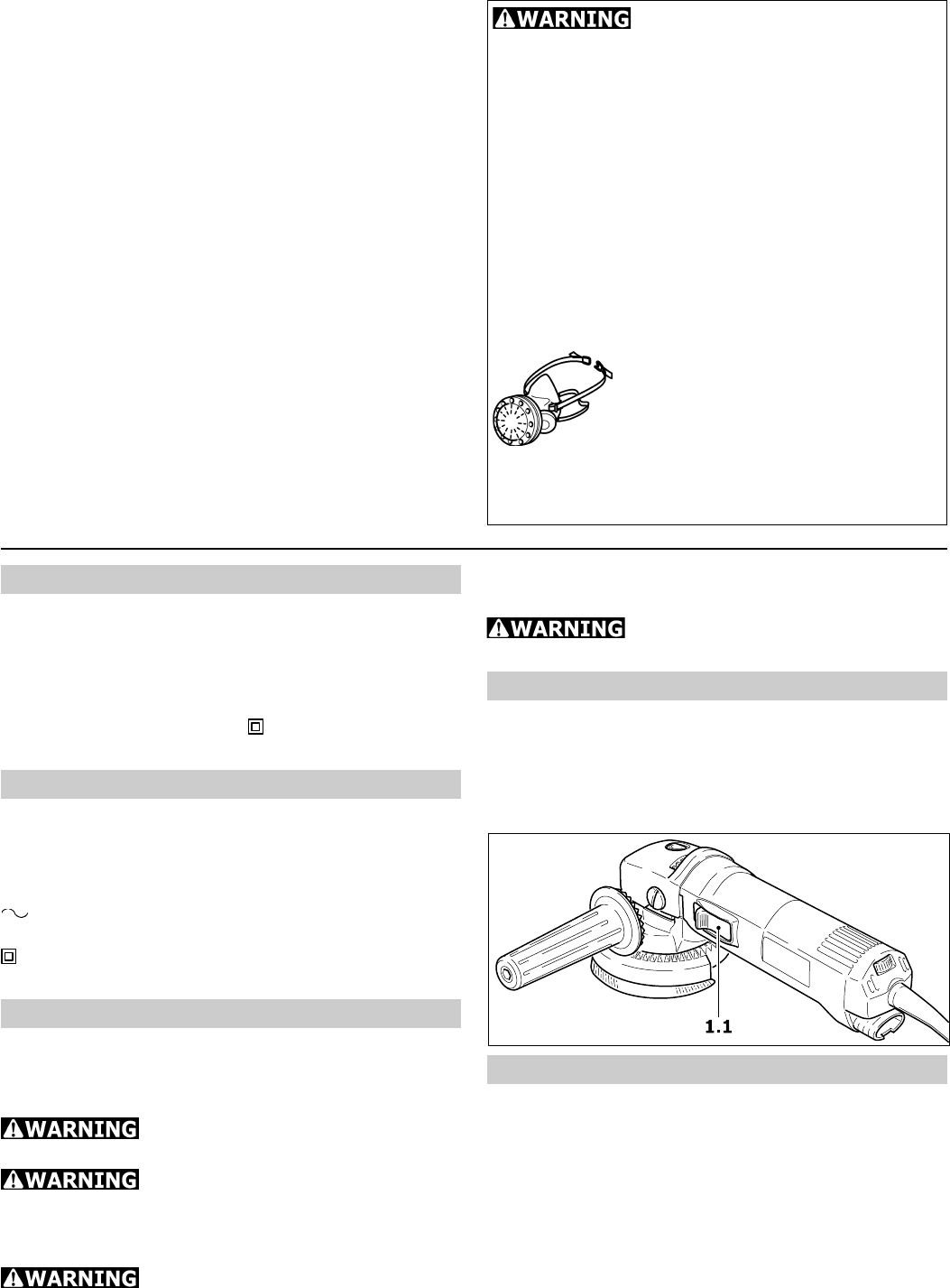
3
to the processing instructions of the material
manufacturer.
The user is liable for any damage
and injury resulting from incorrect usage!
Electrical connection and operation
The supply voltage must correspond with the
voltage figure on the voltage on the rating plate.
To switch the tool on, push the safety sliding
switch (1.1) forwards. The tool is switched off
by gently pressing the rear end of the switch.
Extension cord
If an extension power cord is required, it must
have sufficient cross-section to prevent an
excessive drop in voltage or overheating. An
excessive drop in voltage reduces the output
and can lead to failure of the motor. The table
shows the correct size to use, depending on
cord length and the tools ampere rating. Use
only U.L. and CSA listed extension cords. Never
use two extension cords together. Instead, use
one longer one.
Technical data RAS 115.04 E
Wattage 500 Watt
No load speed 1500 - 4000 rpm
Tool dia. up to 115 mm / 4.5"
Spindle thread M 14
Weight 1.6 kg / 3.5 lbs
Safety standard
/ II acc. to UL 745,
CSA C22.2 No. 745
Symbols
V volts
A amperes
Hz hertz
W watt
alternating current
n
0
no load speed
Class II Construction
rpm revolutions per minute
Use for intended purpose
The RAS 115.04 E is designed for sanding wood,
plastics, stone, composite materials, paints /
lacquers, fillers, stoppers and similar materials.
The tool may not be used for
grinding or cutting metal.
On the tool no grinding disks may
be fastened. It may be worked only with the
provided sanding pad and whereupon fastened
abrasives.
The device is unsuitable for wet
sanding for reasons of electrical safety.
If explosive or self-inflammable dusts are
produced when sanding certain materials, refer
Various dust created by power
sanding, sawing, grinding, drilling and other
construction activities contains chemicals
known (to the State of California) to cause
cancer, birth defects or other reproductive
harm. Some examples of these chemicals are:
lead from lead-based paints,
crystalline silica from bricks and cement and
other masonry products, and
arsenic and chromium from chemically-
treated lumber.
The risk from these exposures varies,
depending on how often you do this type of
work.
To reduce your exposure to these
chemicals: work in a well
ventilated area, and work with
approved safety equipment, such
as dust masks that are specially
designed to filter out microscopic
particles.
21 Check for misalignment or binding of
moving parts, breakage of parts, and any
other condition that may affect the tools
operation. If damaged, have the tool
serviced before using. Many accidents are
caused by poorly maintained tools.
22 Use only accessories that are
recommended by the manufacturer for
your model. Accessories that may be suitable
for one tool, may become hazardous when used
on another tool.
Service
23 Tool service must be performed only by
qualified repair personnel. Service or
maintenance performed by unqualified personnel
could result in a risk of injury.
24 When servicing a tool, use only identical
replacement parts. Follow instructions in
the Maintenance section of this manual. Use
of unauthorised parts or failure to follow
Maintenance instructions may create a risk of
electric shock or injury.


















